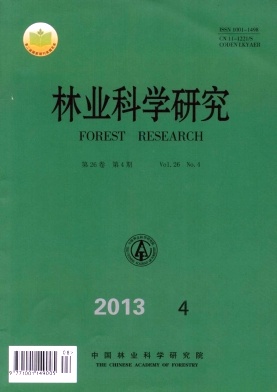|
[1]
|
Hu J Y, Saedler H. Evolution of the inflated-calyx-syndrome (ICS) in Solanaceae[J]. Mol Biol Evol, 2007, 24(11):2443-2453 |
|
[2]
|
Viaene T, Vekemans D, Irish V F, et al. Pistillata-duplications as a mode for floral diversification in (Basal) asterids[J]. Mol Biol Evol, 2009, 26(11):2627-2645 |
|
[3]
|
Coen E S, Meyerowitz E M. The war of the whorls: Genetic interactions controlling flower development[J]. Nature, 1991, 353(6339):31-37 |
|
[4]
|
Pelaz S, Ditta G S, Baumann E, et al. B and C floral organ identity functions require SEPALLATA MADS-box genes[J].Nature, 2000, 405(6783):200-203 |
|
[5]
|
Theissen G, Saedler H. Floral quartets[J]. Nature, 2001, 409(6819):469-471 |
|
[6]
|
Ditta G, Pinyopich A, Robles P, et al. The SEP4 gene of Arabidopsis thaliana functions in floral organ and meristem identity[J]. Curr Biol, 2004,14(21):1935-1940 |
|
[7]
|
Jack T. Molecular and genetic mechanisms of floral control[J]. Plant Cell, 2004, 16(Suppl):1-17 |
|
[8]
|
徐 勇. 桃花发育相关MADS box基因研究 [D].北京:首都师范大学, 2007:23
|
|
[9]
|
Colombo L, Franken J, Koeteje E, et al. The petunia MADS box gene FBP11 determines ovule identity[J]. Plant Cell,1995, 7(11):1859-1868 |
|
[10]
|
Becker A, Theissen G. The major clades of MADS-box genes and their role in the development and evolution of flowering plants[J]. Mol Phylogenet Evol, 2003, 29(3):464-489 |
|
[11]
|
Mandal M A, Yanofsky M. A gene triggering flower formation in Arabidopsis[J]. Nature, 1995, 377(6549):522-524 |
|
[12]
|
Mandel M A, Gustafson-Brown C, Savidge B, et al. Molecular characterization of the Arabidopsis floral homeotic-gene, APETALA1[J]. Nature, 1992, 360(6401):273-277 |
|
[13]
|
Bowman J L, Alvarez J, Weigel D,et al. Control of flower development in Arabidopsis thaliana by APETALA1 and interacting gene[J].Development, 1993, 119(3):721-743 |
|
[14]
|
周兴文, 李纪元, 范正琪, 等. 金花茶查尔酮异构酶基因全长克隆与表达的初步研究[J]. 林业科学研究, 2012,25(1):93-99
|
|
[15]
|
朱高浦, 李纪元, 范正琪, 等. 完全重瓣型山茶花品种‘红十八学士’CjHDEF基因cDNA的序列分析[J]. 生物技术通报, 2011(2):98-102
|
|
[16]
|
朱高浦, 李纪元, 范正琪, 等. 完全重瓣型山茶花品种‘红十八学士’CjHTM6基因cDNA的克隆与分析[J]. 热带作物学报, 2011,32(3):456-462
|
|
[17]
|
朱高浦. 山茶花花MADS-BOX家族B类基因克隆及在重瓣花形成中的作用 [D]. 北京:中国林业科学研究院, 2011:32-36
|
|
[18]
|
邢 勇. 猕猴桃科植物的系统发育[J]. 教学与管理, 1987(4):102-104
|
|
[19]
|
Thomas J. Relearning our ABCs: new twists on an old model[J]. Trends Plant Sci, 2001, 6(7):370-376 |
|
[20]
|
赵印泉, 刘青林. 重瓣花的形成机理及遗传特性研究进展[J]. 西北植物学报, 2009, 29(4): 832-841
|
|
[21]
|
中国科学院中国植物志编辑委员会. 中国植物志:第四十九卷 第三分册 山茶科(一) 山茶亚科[M]. 北京:科学出版社,1998
|
|
[22]
|
Kramer E M, Hall J C. Evolutionary dynamics of genes controlling floral development[J]. Curr Opin Plant Biol, 2005, 8(1):13-18 |
|
[23]
|
Immink R G H, Ferrario S, Busscher-Lange J, et al. Analysis of the petunia MADS-box transcription factor family[J]. Mol Genet Genomics, 2003, 268(5):598-606 |
|
[24]
|
李贵生. 金粟兰花器官特征基因CsAP1、CsAP3和CsSEP3的结构、表达和进化研究 [D]. 北京:中国科学院研究生院, 2005:47-48
|
|
[25]
|
Lowman A C, Purugganan M D. Duplication of the Brassica oleracea APETALA1 floral homeotic gene and the evolution of domesticated cauliflower[J].Hered, 1999, 90(5):514-520 |
|
[26]
|
孙海峰, 孟玉平, 曹秋芬, 等. 枣中APETALA1(AP1)同源基因的克隆及其表达特征分析[J]. 山西大学学报:自然科学版, 2009, 32(2):266-272
|
|
[27]
|
Yao J, Dong Y, Kvarnheden A, et al. Seven MADS-box genes in apple are expressed in different parts of the fruit[J]. J Amer Soc Hort Sci, 1999, 124(1):8-13 |





 DownLoad:
DownLoad: